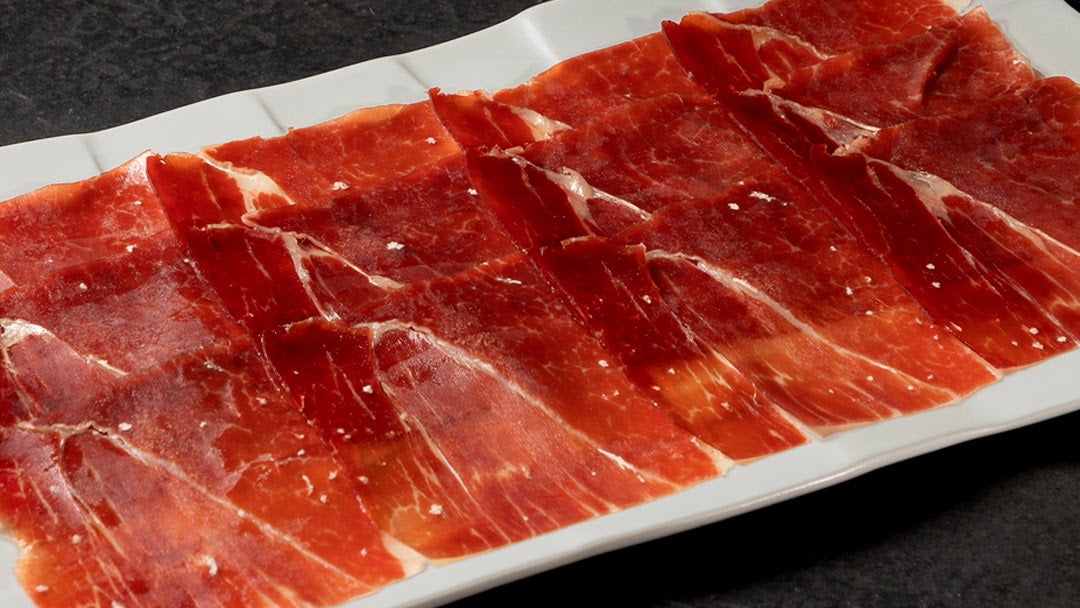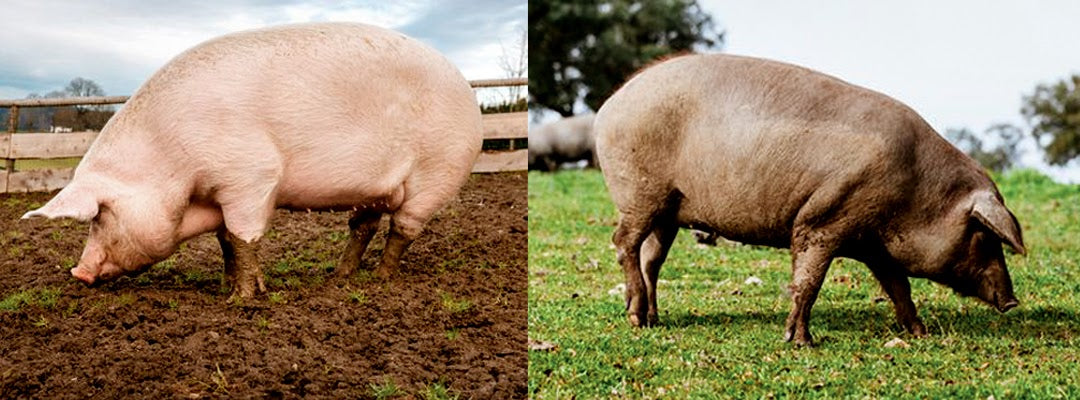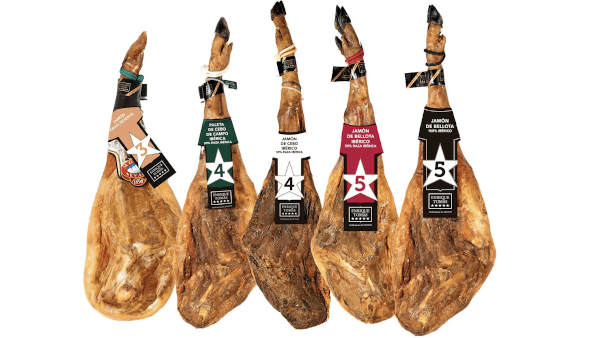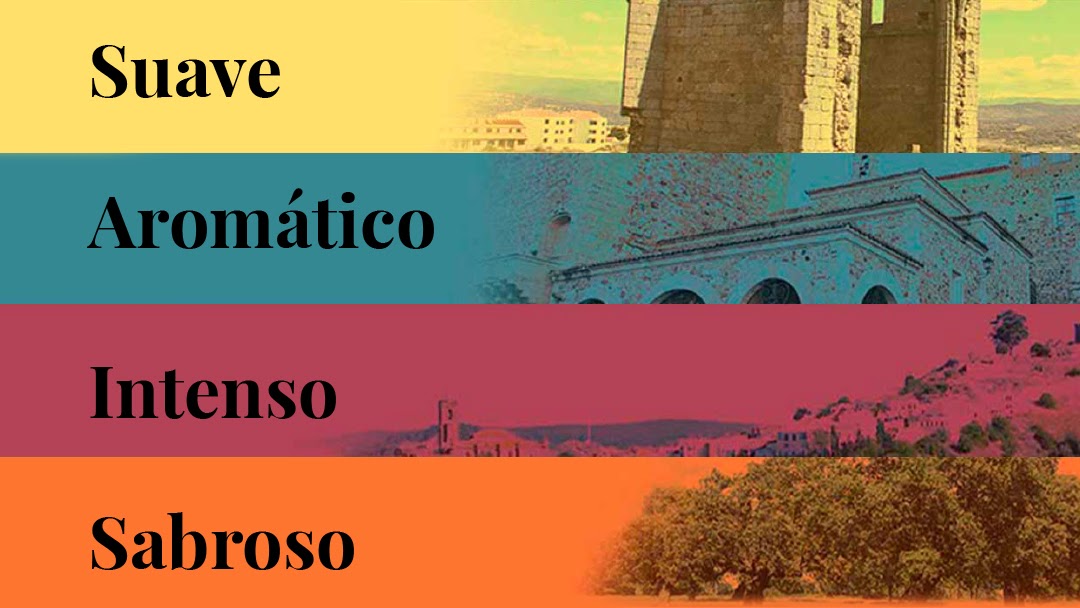Jamón market
To know well the types of ham that we can find on the market and make a good purchasing decision, we must take into account some variables that become essential to find our ideal ham. Our goal is to become a ham expert so you can know which one is best for you.
The vocabulary used in the world of ham is quite complex and it is true that over time some beliefs have been generated around this product that are not entirely true. Let's start with the simplest things, taking into account three basic variables to define the type of ham. These are the breed of pig it comes from, its diet and the curing time.
Jamón ibérico vs Jamón Serrano
There are two main types of ham that interest us. On the one hand, Serrano ham, the most common, the one that can be found all over the world. And, on the other hand, Iberian ham, a star product in world gastronomy, but which is only found in the Iberian Peninsula.
Serrano ham comes from white pigs. These pigs are those that are raised on farms and fed with feed and cereals. The curing time in salt for Serrano ham legs is 8 to 12 months in most cases. At Enrique Tomás, our serrano ham is the “Gran Reserva”. It is a non-Iberian “all-rounder”, its curing time is around 18 months, which allows the product to acquire a more authentic and exquisite flavor, as similar as possible to Iberian ham. We tell you more about serrano ham in the following link .
Iberian ham comes from the Iberian pig, native and unique to the Iberian Peninsula. Depending on the percentage of Iberian breed that the pig has and the diet it receives, we find different types of Iberian ham. To know more details about him, click .
Types of jamón ibérico
Jamón de cebo 50% ibérico
It is one that comes from the Iberian pig but, due to its genetics, weight, etc. The rancher decides to raise it on a farm. There they feed on feed and cereals. Then, in this case, at Enrique Tomás we cure it in salt for approximately 24 months.
Jamón de cebo campo 50% ibérico
In this case, the Iberian pig has lived on a farm, but also in freedom grazing in the countryside, being able to feed on some herbs and wild fruits and acquiring some qualities that will make it a better ham. Even so, it must be taken into account that the basis of its diet has been received through feed and cereals. In this type of pigs the percentage of purity of the Iberian breed is usually between 50% and 75%. Its healing time is also 24 months.
Jamón de bellota 50% Ibérico
The Iberian acorn-fed hams, for their part, come from pigs that have done the montanera, the name given to the last phase of fattening of the pigs and which takes place from October to February in the pastures. During the winter, the pigs are released into the wild where they feed on acorns and roam freely. Thanks to the ability of these pigs to infiltrate fat into the muscle, to a diet based on acorns and natural products and to the activity that the animals do during these almost five months, their front and hind legs acquire those characteristics that make them Its meat is so juicy and delicious. In this type of ham the percentage of purity of the Iberian breed is usually between 50% and 75%.
Jamón de bellota 100% ibérico:
The one popularly known as “Pata Negra”. This ham has done everything that we have explained in the previous point, but it meets a very important and specific requirement: it is a purebred Iberian pig, that is, from a 100% Iberian father and mother. It is the only one that can be considered 100% Iberian and, for this reason, it is the most precious and the most expensive.
Learn more about acorn-fed Iberian ham:
Jamón flavors
The types of ham can also be classified by their place of origin, a variable that directly affects their flavor. Now you will understand why.
In the case of serrano ham we see it clearly. Depending on the country from which it comes, it has certain qualities or others, in addition to a unique flavor. What in Spain is serrano ham, in Italy it is “Prosciutto” and in France it is “jambon”, but, although apparently it is the same product, the differences are obvious and, clearly, we can see it on the palate. .
Depending on the area of origin, or as they say, according to its “denomination of origin”, the ham is usually treated in one way or another. This will be a key point to differentiate them in their flavor. As we say at Enrique Tomás, “cooking is everything.” And what does this cooking consist of? It is about preserving the leg in particular conditions and for a specific time so that it slowly gives rise to the deliciousness that we eat.
Flavors of Jamón ibérico according to tastes
As we say at Enrique Tomás: “flavors to suit your tastes.” And we are in favor of the fact that it is not the most expensive ham or the purest breed ham that is better, but rather the one you like the most. And we are going to help you find it. So, we have gone one step further, and we have classified the origin of the ham according to flavor. For us there are 4 flavors:
- Mild: A mild Iberian has been cured longer and therefore generally has less salt.
- Intense: If you are looking for a powerful ham with an extra point of salt, super juicy, yours is the intense one.
- Aromatic: If you want a ham that already enters your nose, your flavor is undoubtedly aromatic. This product is obtained from pigs that are fed and cured as acorn-fed Iberian ham is made in the same drying rooms. Thanks to the rich biodiversity and climate of the Iberian Peninsula, the ham obtained is inimitable.
- Tasty: If in your case you prefer a very tasty Iberian ham, that when you put the slice in your mouth you feel an explosion of flavor and aromas, tasty ham is what you need because its taste penetrates and lasts on the palate.
In short, the variables that affect classifying ham within one category or another are the breed of the pig, its diet and its treatment or curing . Furthermore, within each type of ham we find nuances of flavor that can be different depending on the place of origin and the producer. As the saying goes “every teacher has his or her little book.”
If you like to let yourself go, at Enrique Tomás, as expert ham makers, we will help you find the perfect ham for you. Contact us and we will advise you as best as possible.
FAQ's
HOW IS IT DECIDED WHICH IBERIAN PORK IS GOING TO MAKE THE MONTANERA AND, THEREFORE, PROVIDE AN IBERIAN ACORN HAM?
This depends on the season and especially on the weather, as happens with a vintage or a harvest. The manager of each farm will decide the number of Iberian pigs to be released, depending on the amount of acorns that nature has provided that year.
CAN IBERIAN HAM BE MADE IN OTHER PLACES IN THE WORLD?
No, Iberian ham can only be made in the Iberian Peninsula, its place of birth and origin.
HOW IS 100% IBERIAN ACORN HAM DIFFERENT FROM THE REST?
It comes from a 100% Iberian mother and father and has been raised freely in the pastures feeding on acorns.
WHICH HAM IS BEST?
There is no one better than the other. We know that 100% Iberian acorn-fed ham is the best quality. Now, that does not mean that it is the one you will like the most nor that it is the only good alternative when it comes to buying a ham. It will depend on your taste and the purpose you want to give it.
WHAT IS THE MAIN DIFFERENCE BETWEEN SERRANO HAM AND IBERIAN HAM?
The main difference is found in the breed, Serrano ham comes from white or non-Iberian pigs while Iberian ham comes from the Iberian breed, unique and typical of the Iberian Peninsula.




